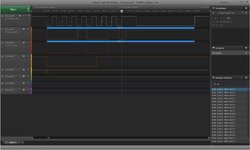Was ich mir letztens überlegt habe: Müsste man nicht durch einen Chip zwischen Objektiv und Body bei den Kameras, die das nicht selbst können, mit der Brechstange eine Belichtungskorrektur für Auto-ISO in M nachrüsten können?
Einfach alle Kommandos durchlassen, nur den Blendenbefehl entsprechend nach oben oder unten abändern, ohne dass die Kamera es mitbekommt...
Jaaa, den Aufwand nicht wert, unpraktikabel und bei Offenblende gibt es keine Korrektur nach oben. Aber sonst?
Einfach alle Kommandos durchlassen, nur den Blendenbefehl entsprechend nach oben oder unten abändern, ohne dass die Kamera es mitbekommt...
Jaaa, den Aufwand nicht wert, unpraktikabel und bei Offenblende gibt es keine Korrektur nach oben. Aber sonst?



